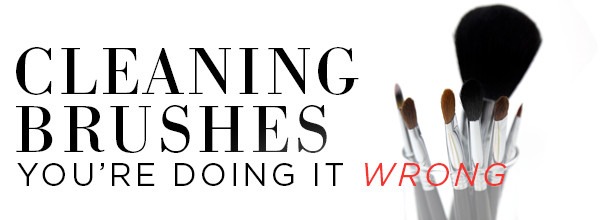 Kailey Strachan for E! Online
Kailey Strachan for E! OnlineGuess what celebrity makeup artists use to clean their makeup brushes. Bottled—and pricey—concoctions designed specifically for the job? Nope. Instead of using prepackaged makeup brush cleaner, which can cost upwards of $20 and contain skin-agitating alcohol, they employ a few homespun methods using affordable items you likely already have around the house.
Now, that tip alone should be enough to inspire a weekly suds-session with our brushes. But in reality, most of us still skimp on the practice.
Enter the wisdom of E! Style Collective members Ashley Rebecca and Julianne Kaye, who beautify stars like Jemima Kirke, Kate Hudson and Nicole Richie: the pros reminded us that a laissez faire approach may contribute to breakouts, as often-used and long-neglected brushes can wield an unsettling amount of buildup and bacteria. And who needs another cause of breakouts in the summer? To help clear us of bacteria-born blemishes, starting with clean brushes, Ashley and Julianne gave us their top tips for proper brush cleaning.
Pick your potion: What do our experts use instead of fancy brush cleaning solutions? Ashley turns to a 50/50 mixture of natural dish soap and olive oil. "The soap disinfects and the olive oil conditions the hairs," she said. If your olive oil is too fancy to be used as a cleaning tool, you can also try a touch of baby or clarifying shampoo, or plain dish soap, like Julianne likes to use.
Agitate the brush: After applying a pea-sized dab of cleanser to the brush, work it through with your hand or a soft, textured surface. Here, we used Sigma Beauty Brush Cleaning Glove, equipped with different textures to help wash, rinse and reshape the brush.
Rinse, then rinse some more: Use running water to rinse the gunk out of the brush, continuing until water runs clear.
Reshape: At this point, your brush will look pretty wonky; use your fingers to mold the brush into its natural shape to ensure it can perform as needed after drying.
If your brush is extremely misshapen with pokey hairs that don't fall into place after reshaping, try Julianne's unconventional-but-effective pro tip: "Use mild hair gel (no mega-hold formulas) to help mold the brush back into shape—it's like memory foam for your brushes," she said. "After drying, it may feel stiff initially, but it will soften up again after you shake it out."
Lay to dry: It may be more space efficient to drop brushes, bristles up, in a sink-side cup but this will only cause moisture to seep into the brush head, glue to loosen and brush hairs to fall out. Instead, maximize the lifespan of your tools by laying them flat to dry overnight on a clean surface. By the morning, your clean, soft brushes will be ready to define cheeks and line eyes, no bristle-born bacteria added.